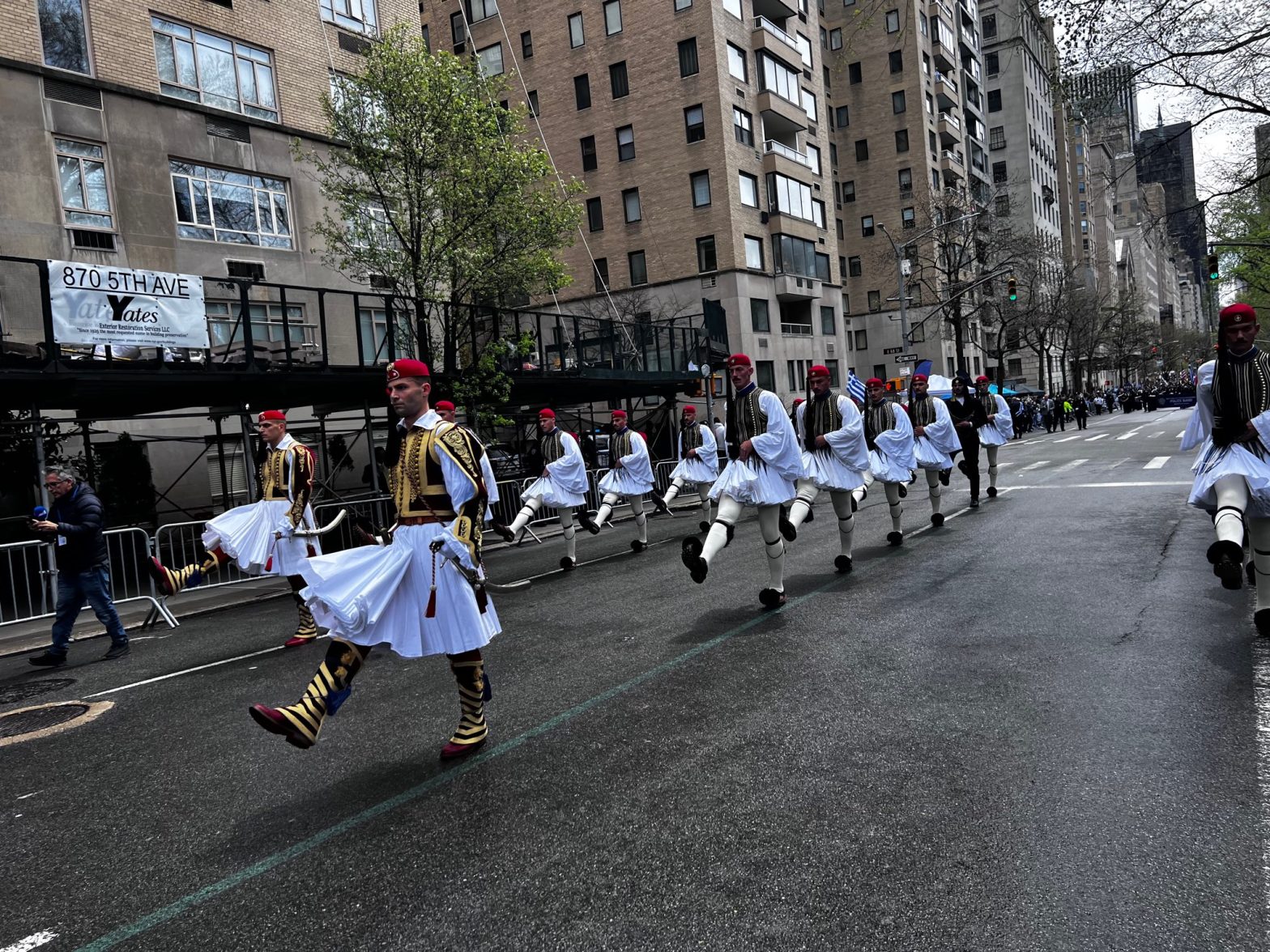General News
Meropi Kyriacou Honored as TNH Educator of the Year
NEW YORK – Meropi Kyriacou, the new Principal of The Cathedral School in Manhattan, was honored as The National Herald’s Educator of the Year.

ATHENS – The journalistic cliches that are used in these cases prove to be extremely inadequate to describe what the inhabitants of Eastern Attica experienced on Monday night with the fires wreaking havoc everywhere.
The National Herald was at the site of the disaster and recorded the desperate situation, the despair and the anxiety of the inhabitants who saw the catastrophe on its way and could not do anything to stop it.
We started from the center and crossed the Mesogeion Avenue and headed for Marathonos Avenue, the main road that crossed the area that was at the center of the fires.
Already after Pallini, the fumes had already begun to make their presence known and were strong in the atmosphere on Monday evening, when only a few hours earlier there was no trace of them. To be sure, everyone’s eyes were focused on the other fiery front, at Kineta.
At the height of Pikermio, the police had the first block and did not allow the passage of cars in order to facilitate service vehicles of all types- (fire trucks, ambulances, private water trucks hired by the State, etc.).
It was very unnerving. The young police officers also had to facilitate the movement of service vehicles and at the same time quarreled with the drivers who wanted to go through to see what was happening with their homes. Among the crowd, we also distinguished a former governor, who had probably also lost his composure.
The fires on the slopes of the mountain were intense, and the wind blew the ashes down on us.
Coming from the opposite route, the route from Mati to Athens, there were ambulances and patrol cars with lights flashing and sirens blazing constantly as if possessed.
At one point, two fire trucks were towed away, either because they did not stand the tough battle anyway or due to inadequate maintenance.

The next large police block of traffic was at the junction of Rafina. They were literally scenes of panic, and the authorities’ inability to co-ordinate efforts was obvious.
Apart from residents of the area who saw their houses burning in the surrounding hills, there were many parents whose children were trapped in an adjacent camp.
The police assured them that the children were on the beach and were safe but that did not reassure the parents: mothers cried and shouted their children’s names, worrying about their fate.
At the same time, residents of the area were urging those causing the traffic to pass, and when they did, after tensions and quarrels, all they could do was move a few meters further, into the heart of the “war zone,” in Mati, being trapped and blocking the firefighters’ efforts to put out the fires, putting themselves directly at risk.
At the same time, nobody directed the ferry boats that were en route to Rafina from the nearby islands to head to other ports like Lavrion. As a result, amid all the panic, the Rafina road junction was also filled with tourists arriving from the Cyclades.
Passing from the traffic barricade (on foot) to Mati, the atmosphere became more and more dense. The firefighters fought both the fires and the inhabitants who, in their despair, seemed to create problems for the firefighting effort. From that point to where we could move safely, burning homes could be seen and voices in despair were heard everywhere…
NEW YORK – Meropi Kyriacou, the new Principal of The Cathedral School in Manhattan, was honored as The National Herald’s Educator of the Year.

NEW YORK – The New York Greek Independence Parade on Fifth Avenue, commemorating the 203rd anniversary of the Greek Revolution of 1821, was held in an atmosphere of emotion and pride on April 14.
NICOSIA - Cyprus - home to United Kingdom military bases where fighter jets were used to help defend Israel from an Iranian attack using missiles and drones - has stepped up security on the island amid fears the Middle East conflict could worsen.
A plot of land for sale in Tripoli, Arkadia Prefecture, 268.
ATHENS - Expecting another record year in tourism to surpass the numbers in 2023 in arrivals and revenues, Greece’s infrastructure - particularly on overwhelmed islands - isn’t adequate to deal with the demands even as more resorts keep opening.
For years, Israel and Iran have been engaged in a silent struggle of mutual annihilation.